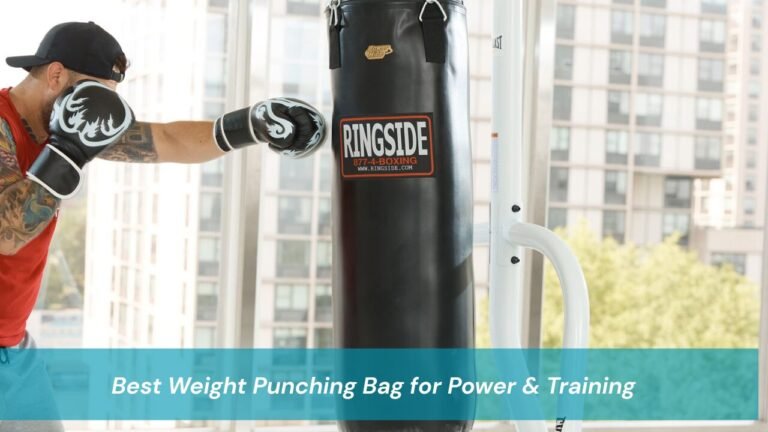Boxing has always been a sport that blends power, precision, and strategy, but one factor that never changes is the importance of protection. Whether you are entering your very first amateur tournament or walking out for a professional bout under the bright lights, having the correct boxing defense equipment is not optional; it is the foundation of your safety, performance, and compliance with official rules. Step into the ring without the right gear, and you not only risk serious injury but also the possibility of disqualification if your equipment fails to meet federation standards.
As we move into 2025, regulatory updates from organizations such as IBA (International Boxing Association), USA Boxing, and professional commissions have tightened standards on what is considered match-legal. Fighters now need to think beyond simply buying a pair of gloves or a mouthguard. They need to know about approval stamps, sizing rules, and even the fine details of color restrictions on uniforms. This article provides a comprehensive breakdown of every essential defensive item, why it matters, and how to make sure your kit passes inspection.
Understanding Why Equipment Matters
In boxing, the line between winning a fight and ending up sidelined with injury can be razor thin. Defensive gear is the insurance that allows athletes to perform at their best without unnecessary risk. Gloves cushion the knuckles and reduce the impact delivered to both you and your opponent. Mouthguards prevent dental fractures and soft tissue injuries inside the mouth. Hand wraps stabilize fragile joints in the hand that would otherwise absorb every punch. Even footwear and uniforms are designed with defensive qualities proper boxing shoes help with balance and footwork, which is in itself one of the best forms of defense.
On top of physical protection, correct equipment ensures that a boxer complies with competition regulations. Most federations perform a strict equipment inspection before fights, and if a glove lacks the right stamp or a headgear does not meet specifications, you may be forced to borrow replacements on the spot. For that reason, athletes who want to be ring-ready in 2025 must know what to buy and why.
Competition-Approved Gloves The First Line of Defense
Among all items, gloves are the most visible and strictly regulated piece of boxing defense equipment. In professional matches, gloves usually weigh between 8 and 10 ounces, while amateur contests may require 10 to 12 ounces depending on the boxer’s weight class. These numbers are not arbitrary. The glove weight determines how much padding is present and how force is distributed when punches land. Heavier gloves provide more protection for hands and wrists but may reduce speed, while lighter gloves are favored in pro contests for sharper, more powerful strikes.
The key factor in 2025 is approval. Major organizations like IBA or USA Boxing require gloves to carry official approval stamps, meaning that not every pair you purchase online will be acceptable. Some events even provide contest gloves to ensure uniformity. For boxers, the smart strategy is to own at least one pair of approved gloves for training and warm-up while relying on organizer-issued gloves for the actual bout. Those investing in their own contest gloves should stick to reputable brands known for supplying federations, since cheaper alternatives often fail inspection.
Mouthguards Protecting More Than Just Teeth
If gloves protect your fists, mouthguards protect your face. They are mandatory in virtually every sanctioned boxing event, and for good reason. A properly fitted mouthguard significantly reduces the risk of broken teeth, jaw fractures, and soft tissue injuries such as lip or tongue cuts. Research also suggests they may help absorb shock that could otherwise travel to the skull, although they are not a substitute for concussion prevention.
In 2025, fighters generally choose between three types: stock, boil-and-bite, and custom. Stock guards are inexpensive but offer the least protection and worst fit, making them nearly obsolete in competitive boxing. Boil-and-bite models are molded at home and represent a good mid-tier option, though they can wear out faster. Custom mouthguards made by dental professionals are considered the gold standard, offering superior fit, breathability, and durability. Experienced competitors almost always invest in custom guards because the comfort they provide during long bouts is invaluable.
Hand Wraps and Tape Hidden but Vital
Hand wraps are often underestimated because they are not as visible as gloves or headgear, but they play a critical role in hand safety. Every punch involves the small bones of the hand absorbing enormous force. Without stabilization, these bones are highly susceptible to sprains, fractures, and tendon injuries. Hand wraps compress and align the joints, while tape locks them in place according to competition rules.
Federations usually specify the length and type of wrap that can be used, with officials checking wraps and tape at the gloving table before the fight. Boxers must learn to apply wraps properly or work with experienced cornermen who know the approved wrapping techniques. Bringing spare wraps is equally important, since damaged or illegal wraps can force you to redo them under time pressure. As subtle as they may seem, hand wraps are the unsung heroes of boxing defense equipment, and mastering their use separates the professional from the casual.
Headgear Conditional but Controversial
Headgear in boxing is a more nuanced topic. In professional matches, headgear is strictly prohibited. However, in amateur settings, especially youth categories and sometimes in women’s divisions, headgear may still be required. The debate revolves around its effectiveness. Studies confirm that headgear protects against cuts, bruises, and external injuries, but its ability to prevent concussions remains contested. Some federations have removed mandatory headgear in elite competitions to reduce vision obstruction and potential head clashes.
In 2025, the key is to follow the rules of your sanctioning body. If you are required to wear headgear, it must be approved by the federation, usually stamped with IBA or USA Boxing logos. Non-approved sparring headgear will be rejected at inspection. Athletes purchasing headgear should prioritize fit, visibility, and padding distribution, ensuring it stays secure during movement. Even in training, where headgear is optional, it remains an excellent way to minimize facial injuries while sharpening defensive skills.
Groin and Chest Protection Gender-Specific Safety
Another often overlooked but mandatory part of boxing defense equipment is groin protection. Male fighters must wear an athletic cup or groin guard, while female fighters are encouraged or sometimes required to use chest protection. These items may not be glamorous, but they prevent some of the most painful and potentially career-threatening injuries.
A groin protector should fit snugly without restricting movement, and athletes should test it during training to avoid surprises in the ring. Women’s chest protectors are usually lightweight shells worn under the sports bra or top, designed to protect sensitive tissue without adding bulk. Both types of protection are easy to forget until they are suddenly needed, and by then it is too late.
Footwear and Uniform Defensive by Design
Defense in boxing is not only about absorbing punches it is also about movement. The right footwear allows fighters to pivot, slip, and retreat efficiently. Boxing shoes are designed with high-ankle support to prevent sprains and lightweight soles that grip canvas surfaces without sticking. Using running shoes or generic sneakers is not only unprofessional but also dangerous, as they lack the stability needed for quick defensive footwork.
Uniforms, including trunks and vests, may also be regulated. Many organizations enforce strict color codes, often requiring red or blue uniforms to match corner assignments. Excessive branding, non-approved logos, or incorrect colors can all lead to equipment violations. For fighters, respecting these rules is part of presenting themselves as professionals in the sport.
Preparing for Equipment Control
Every boxer, amateur or professional, must pass through equipment control before stepping into the ring. This inspection ensures that all defensive gear meets the event’s technical standards. The process usually involves showing gloves, wraps, headgear (if applicable), groin protector, mouthguard, and shoes. Officials may also check uniforms for compliance.
The smart strategy is preparation. Read the event fact sheet weeks in advance and verify what types of gloves, wraps, or protective equipment are permitted. Ensure that your gear carries the proper approval stamps and bring spares for key items like wraps and mouthguards. Arriving early on fight day allows time to adjust if something is rejected. The worst-case scenario is scrambling for borrowed gear minutes before your fight a situation every experienced boxer knows how to avoid.
Amateur vs. Professional Requirements
One of the biggest sources of confusion for newer athletes is the difference between amateur and professional equipment standards. Amateur boxing, governed by bodies like USA Boxing and IBA, often requires headgear in specific categories, gloves with higher padding, and strict adherence to color codes. Professional boxing, by contrast, eliminates headgear and typically uses lighter gloves to emphasize performance and spectacle.
For example, an amateur featherweight might wear 12-ounce approved gloves, headgear, and a standardized red or blue uniform. A professional in the same weight class would instead fight with 8-ounce gloves, no headgear, and trunks of their choice, subject only to commission approval. Understanding these differences is critical for athletes transitioning between amateur and professional careers.
Real-World Maintenance and Preparation
Buying the right gear is only half the battle. Proper maintenance ensures that defensive equipment continues to perform. Gloves should be broken in during training and aired out to prevent odor and material breakdown. Mouthguards need to be cleaned after every use, and boil-and-bite models may need to be re-molded in hot water as they lose shape. Hand wraps should be washed regularly to maintain elasticity, and headgear padding should be replaced if it compresses too much.
Fight-week preparation involves double-checking every item. Many boxers prepare a secondary kit bag with spare wraps, tape, and a backup mouthguard in case of emergencies. Cleaning and inspecting gear not only extends its life but also demonstrates professionalism.
Conclusion
The best boxing defense equipment in 2025 is not just about buying gloves and a mouthguard. It is about understanding regulations, investing in protection that suits your level, and preparing so thoroughly that nothing distracts you on fight night. Boxers should first read the event rulebook carefully to confirm glove sizes, headgear requirements, and uniform restrictions. Second, they should prioritize critical gear particularly gloves and mouthguards since without these items no contest can begin. Finally, they should bring spares and arrive early at equipment control, ensuring a smooth inspection and peace of mind before the opening bell.
By treating defensive gear as seriously as offensive training, fighters protect their health, preserve their careers, and give themselves the freedom to focus entirely on performance. In boxing, defense is not just about slipping punches it begins long before the fight, with the equipment you choose to wear. Visit Boxing Essential to explore more.




